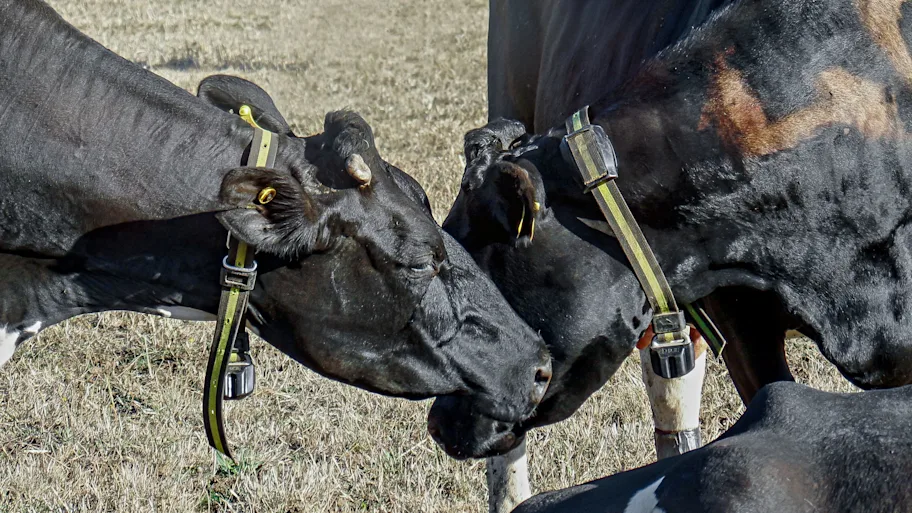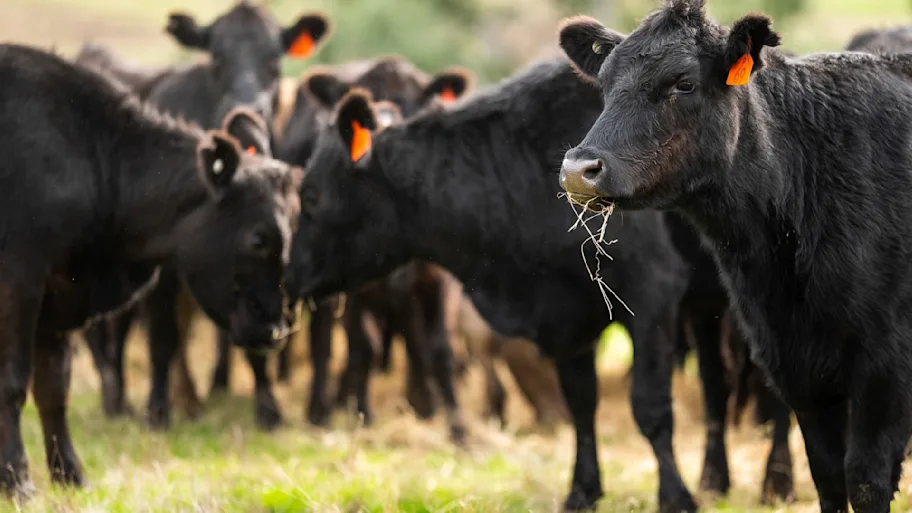
- Science news
- Featured news
- Cows prefer “live” co-moo-nication, study reveals
Cows prefer “live” co-moo-nication, study reveals
_© Institute of Animal Welfare Science, Vetmeduni Vienn_a
Cows enjoy the sound of a human voice -- but are more relaxed by a face-to-face chat than when listening to a recorded voice through a loudspeaker. “Live” talking can be used to improve relationships between cattle and humans, therefore benefiting animal welfare.
By Sarah Yardley, Frontiers science writer
After months of technology-based communication enforced by COVID-19, many of us are missing a “live” human voice. But we’re not the only ones -- a new study reveals that cows also prefer a face-to-face chat. The research, published in Frontiers in Psychology, discovers that cows are actually more relaxed when spoken to directly by a live human, rather than when listening to a recorded voice via a loudspeaker.
Talking to cows – reactions to different auditory stimuli during gentle human-animal interactions► Read original article► Download original article (pdf)
“Cattle like stroking in combination with gentle talking,” says Annika Lange of the University of Veterinary Medicine, Vienna, Austria. “In scientific contexts, a recording of a human voice speaking gently could be used to relax the animals, because it can be difficult to repeat the same phrases in the same way during experiments.”
Using a recorded voice means conditions are as similar as possible in each trial, following a concept known as “standardization” -- an important principle of scientific experimentation. However, the team of scientists wanted to find out if cows respond differently to the sound of recorded voices compared to a human talking directly to them. “Our study suggests that live talking is more relaxing for our animals than a recording of a human voice”, Lange says. “Interactions may be less positive when they become artificial through standardization”.
The team worked with a herd of 28 cattle, comparing the benefits of either stroking the animals while playing a recording of an experimenter’s voice, or stroking while speaking to the animals directly. After monitoring the animals’ responses during the experiments, they found live talking was the best mood enhancer for their bovine friends.
Heart rate variability was higher when cattle were spoken to directly, indicating they were enjoying themselves. After this treatment, heart rates were lower than after listening to a recorded voice, showing that the animals were more relaxed following the live chat.
Related: Grooming behavior between dairy cows reveals complex social network
How does a chilled cow behave? “When relaxed and enjoying the interaction, the animals will often stretch out their necks as they do when they groom each other,” says Lange. “Additionally, it is thought that ear positions may indicate mood: hanging ears and low ear positions appear to be linked to relaxation.”
The experiment included only one herd and one playback recording. Lange calls for further research to see if results are also valid for different herds and situations, such as with cows that are more fearful of humans. This will help in further studies on the improvement of cattle-human relationships, an important aspect of animal welfare.
_© Institute of Animal Welfare Science, Vetmeduni Vienn_a
Original article: Talking to cows – reactions to different auditory stimuli during gentle human-animal interactions
REPUBLISHING GUIDELINES: Open access and sharing research is part of Frontiers’ mission. Unless otherwise noted, you can republish articles posted in the Frontiers news blog — as long as you include a link back to the original research. Selling the articles is not allowed.






